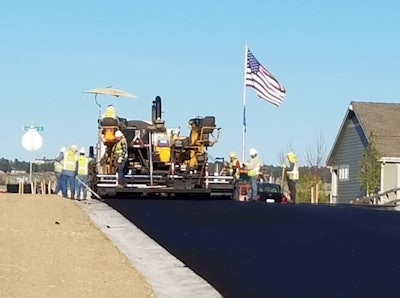
On June 22 the House of Representatives released the text of the Moving Forward Act that seeks to make $1.5 trillion worth of infrastructure investments across a number of U.S. economic sectors, such as transportation, energy, education, housing and healthcare, among others.
That legislation includes within it the INVEST in America Act surface transportation reauthorization bill recently advanced by the House Transportation & Infrastructure Committee on June 18.
A 96-page summary of the Moving Forward Act breaks down the specific sector-by-sector infrastructure investments, including:
- $494 billion in surface transportation reauthorization funding.
- $130 billion via the Reopen and Rebuild America’s Schools Act, targeting “high-poverty” school infrastructure needs.
- $100 billion for “affordable housing infrastructure” to create or preserve 1.8 million homes.
- $30 billion to upgrade hospitals to increase capacity, help community health centers respond to COVID-19, and prepare for future public health emergencies.
- $25 billion in the Drinking Water State Revolving Fund and other programs to ensure access clean drinking water and to help remove dangerous contaminants from local water systems.
- $25 billion to modernize U.S. Post Office infrastructure and operations, including building up a “zero emissions” postal vehicle fleet plus buying modern mail processing equipment and other goods.
The bill would authorize $257.4 billion in contract authority for FY22 through FY25 for the Federal-aid highway program and extend a provision to allow any additional sums deposited into the Highway Trust Fund to be distributed through existing statutory formulas without a need for further authorization. This ensures that set-asides are included in this calculation.
New Design Standards
Under Section 1107 of the summary, states are introduced to the new "complete and context sensitive street design" program. This section revises roadway design standards to require consideration of all users of the transportation facility, including pedestrians, bicyclists, public transit users, children, older individuals, individuals with disabilities, motorists and freight vehicles.
Instructs project sponsors to design in a manner that is tailored to the context of that facility, rather than a “one size fits all” approach. The text says that this ensures plans and specifications for all Federal-aid highways take into consideration context sensitive design principles. It also replaces the requirement that Interstate design accommodate strict 20-year traffic forecasts on the Interstate, and instead allows States to focus on the existing and future operational performance of the facility. Requires the Secretary, in consultation with AASHTO, to approve design standards for the National Highway System (NHS) that take into consideration context sensitive design principles and authorizes design flexibility for local governments for Federal-aid projects.
Innovative project delivery will also increase the Federal share for projects that use innovative materials or processes that reduce greenhouse gas emissions, certain innovative bridge construction technologies and advanced digital construction systems.
The bill also indicates that states should utilize life-cycle cost analysis to evaluate the total economic cost of a transportation project over it expected lifetime.



















